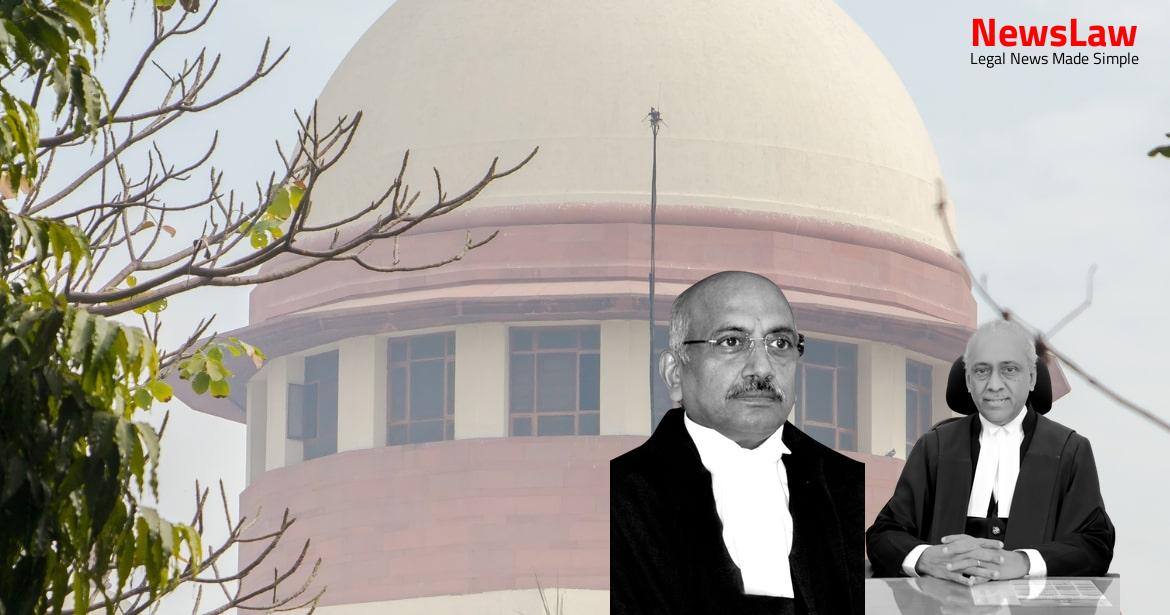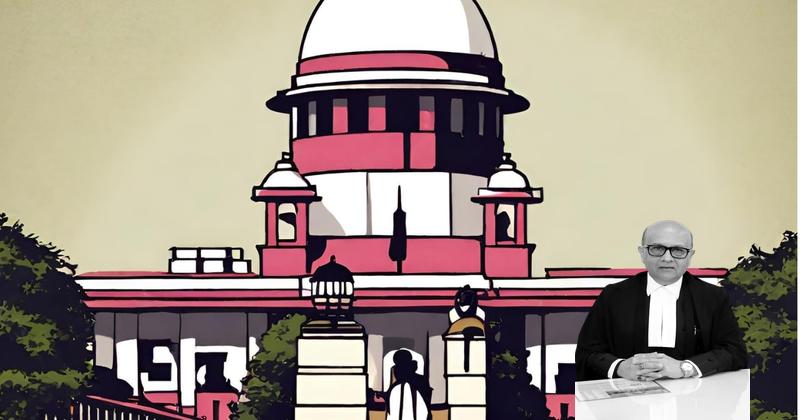Delve into the detailed legal analysis conducted by the court in a recent insolvency case, focusing on the application of the Limitation Act. The case involves crucial considerations surrounding acknowledgment of liability, timeliness of actions, and the interpretation of statutory provisions. Follow along to gain insights into the complex legal implications and the impact on the outcome of the case.
Facts
- Cheques issued in favor of the operational creditor on 28.09.2015.
- Operational creditor produced a letter as evidence of the six cheques being issued.
- The appellant filed an application under Section 9 of the Code on 20.04.2018 against M/S Arpita Filaments Private Limited.
- NCLAT determined that the acknowledgment of liability under Section 18 of the Limitation Act should have occurred on or before 07.10.2016, even if the date of default is considered to be 7.10.2013.
- Debt was found to have arisen between 11.08.2013 to 02.09.2013.
- Issuance of six cheques for part payment of the liability on 5.12.2017 was deemed insufficient to extend the limitation period.
- As a result, the NCLT admitted the application under Section 9 of the Code and announced a moratorium under Section 14.
Also Read: Undisclosed Conviction for Dharna Under Police Act Leads to Overturned Election
Arguments
- National Company Law Appellate Tribunal (NCLAT) reversed the order of ‘Admission’ passed by the National Company Law Tribunal (NCLT).
- NCLAT held that the application under Section 9 of the Insolvency and Bankruptcy Code, 2016 was barred by limitation.
- The operational creditor filed the present appeal against the NCLAT’s decision.
- Counsel for the operational creditor, shareholder/Director of the corporate debtor, and Interim Resolution Professional presented their arguments.
Also Read: Critical Analysis of Legal Principles in a High-Profile Criminal Case
Analysis
- NCLAT did not discuss the letter dated 28.09.2015, even though the cheques in question were dated December 2017.
- Due to this oversight, NCLAT reversed the decision of NCLT and dismissed the application of the operational creditor.
- Parag Gupta and Associates’ stance remained unchanged by Jignesh Shah’s involvement.
- The operational creditor claimed that the six cheques were handed over with the letter dated 28.09.2015, and the details matched the allegedly lost cheques by the corporate debtor in March 2017.
- The first respondent mentioned that stop payment instructions were issued by the corporate debtor, but the bank’s acknowledgment contained a different date.
- The corporate debtor stated that the cheques were lost in March 2017, and stop payment instructions were given to the bank on 4.03.2017.
- The corporate debtor disputed the validity of the letter dated 28.09.2015, as it was issued by Shree Adeshwar Textiles.
- NCLT ruled in favor of the operational creditor, stating there was an acknowledgment of liability from the corporate debtor within the limitation period.
- The corporate debtor’s director submitted copies of stop payment instructions due to lost cheques from the banker, with a discrepancy in the date caused by a computer error.
- NCLAT failed to consider the key arguments related to the letter and the six cheques in the case.
- The doubt created by Babu Lal (supra) was cleared in Laxmi Pat Surana vs. Union Bank of India
- In Babu Lal Vardharji Gurjar vs. Veer Gurjar Aluminium Industries, it was held that the reference in Jignesh Shah to Section 18 of the Limitation Act was only illustrative
- The failure of NCLAT as the first appellate authority to look into vital aspects vitiates its order
- Law relating to the applicability of Section 18 of the Limitation Act is well settled
- Jignesh Shah and Another vs. Union of India emphasized on extending time as provided in the Limitation Act
- The Court applied Section 18 of the Limitation Act to determine the validity of an entry in the balance sheet of a company as an acknowledgment in writing.
- The applicability of Section 18 of the Limitation Act and the circumstances for its application have not been examined by NCLAT.
- The Court held that an entry in the balance sheet can be considered an acknowledgment in writing, with the caveat of accompanying reports to be considered.
- The order of NCLAT is deemed to be set aside, and the matter should be remanded for a fresh consideration.
Also Read: Interpretation of Stamp Duty Provisions
Decision
- The appeal is allowed.
- The impugned order of NCLAT is set aside.
- The matter is remanded back to NCLAT for a fresh consideration.
- The remand should be done in the light of the observations and principles of law indicated above.
Case Title: SVG FASHIONS PVT. LTD (EARLIER KNOWN AS SVG FASHIONS LTD) Vs. RITU MURLI MANOHAR GOYAL (2022 INSC 363)
Case Number: C.A. No.-004228 / 2020



